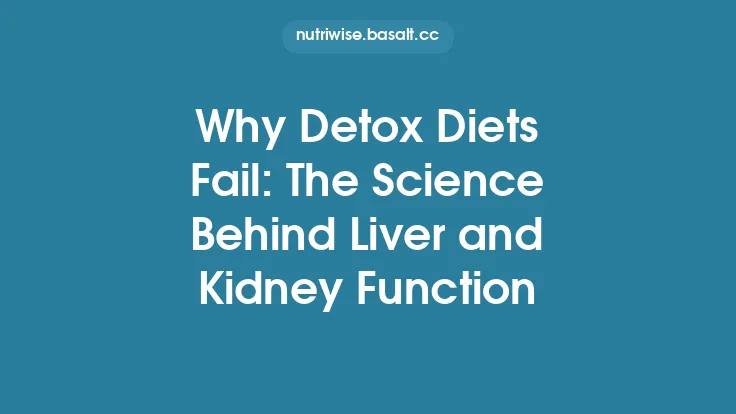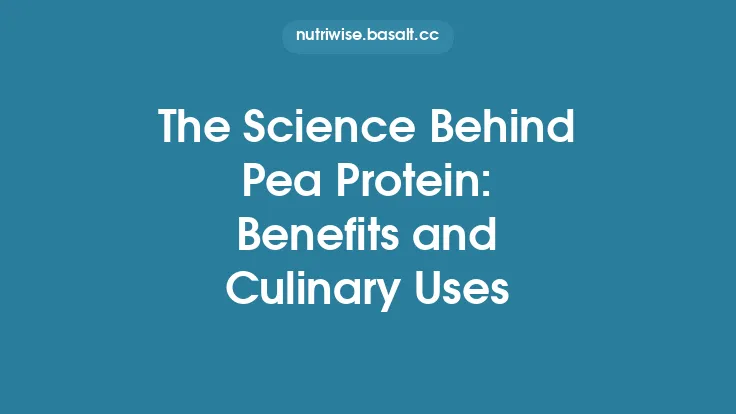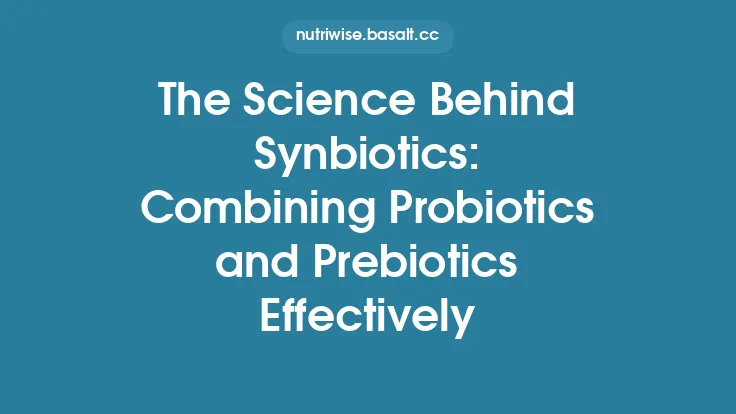The modern surge of interest in omega‑3 fatty acids has placed eicosapentaenoic acid (EPA) and docosahexaenoic acid (DHA) at the forefront of nutritional science. While both belong to the long‑chain polyunsaturated fatty acid (LC‑PUFA) family, their biochemical identities, metabolic fates, and physiological actions differ in ways that are crucial for a wide range of health outcomes. Understanding the underlying science helps clarify why these two molecules are often highlighted separately in research, clinical practice, and public health recommendations.
Molecular Structure and Distinctive Features
EPA (20:5n‑3) and DHA (22:6n‑3) share the same parent omega‑3 carbon chain but diverge in length and degree of unsaturation. EPA contains 20 carbon atoms and five double bonds, whereas DHA extends to 22 carbons with six double bonds. This extra length and additional double bond confer several physicochemical properties:
- Increased flexibility – The numerous cis‑double bonds introduce kinks that prevent tight packing of fatty acid chains, influencing membrane fluidity.
- Higher susceptibility to oxidation – More double bonds mean a greater propensity for lipid peroxidation, a factor that underlies both their biological activity and the need for careful handling in research settings.
- Distinct metabolic precursors – EPA serves as the primary substrate for the synthesis of series‑3 eicosanoids, while DHA is the main precursor for docosanoids such as resolvins, protectins, and maresins.
These structural nuances dictate how each fatty acid interacts with enzymes, receptors, and cellular membranes, setting the stage for their divergent biological roles.
Metabolic Pathways and Tissue Distribution
Biosynthesis and Inter‑Conversion
In humans, EPA and DHA can be synthesized from the essential fatty acid α‑linolenic acid (ALA, 18:3n‑3) through a series of desaturation and elongation steps. However, the conversion efficiency is low—estimates range from <5 % for EPA and <0.5 % for DHA—due to rate‑limiting enzymes such as Δ6‑desaturase and the competing ω‑6 pathway. Consequently, direct dietary intake of EPA and DHA remains the most reliable means of achieving physiologically relevant tissue levels.
Absorption and Transport
After ingestion, EPA and DHA are incorporated into mixed micelles, absorbed by enterocytes, and re‑esterified into triglycerides (TGs) or phospholipids (PLs). These lipids are packaged into chylomicrons, enter the lymphatic system, and eventually reach the bloodstream. Lipoprotein lipase hydrolyzes TGs, releasing free EPA/DHA that can be taken up by peripheral tissues. In plasma, EPA and DHA circulate both as non‑esterified fatty acids (NEFAs) bound to albumin and as components of TG‑rich lipoproteins.
Tissue Partitioning
- Brain and Retina – DHA is the dominant omega‑3 in neuronal membranes, accounting for ~30–40 % of total fatty acids in the cerebral cortex and ~50 % in photoreceptor outer segments. EPA is present in much lower concentrations but can be locally synthesized from DHA via β‑oxidation.
- Skeletal Muscle and Liver – Both EPA and DHA are incorporated into phospholipid pools, influencing metabolic signaling pathways.
- Immune Cells – EPA is preferentially enriched in neutrophils and macrophages, where it modulates inflammatory mediator production.
The half‑life of EPA in plasma phospholipids is roughly 2–3 days, whereas DHA’s half‑life extends to 2–3 weeks, reflecting its more stable incorporation into structural lipids.
Cell Membrane Dynamics and Fluidity
Cellular membranes are composed of a lipid bilayer interspersed with proteins, cholesterol, and glycolipids. The presence of EPA and DHA in phospholipid bilayers imparts several functional advantages:
- Enhanced Membrane Fluidity – The kinked structure of EPA/DHA prevents tight packing, facilitating lateral movement of proteins and lipids. This fluidity is essential for processes such as receptor clustering, ion channel gating, and vesicle fusion.
- Modulation of Lipid Rafts – DHA can disrupt ordered microdomains (lipid rafts) that concentrate signaling molecules. By altering raft composition, DHA influences pathways like insulin signaling and neurotrophin receptor activation.
- Influence on Membrane Curvature – The conical shape of DHA‑containing phospholipids promotes membrane curvature, aiding in endocytosis and synaptic vesicle formation.
These biophysical effects translate into altered cellular responsiveness, especially in neurons and immune cells where rapid signaling is paramount.
Eicosanoid and Specialized Pro‑Resolving Mediator Production
EPA and DHA serve as substrates for distinct families of bioactive lipid mediators:
- EPA‑Derived Eicosanoids – Cyclooxygenase (COX) and lipoxygenase (LOX) enzymes convert EPA into series‑3 prostaglandins (e.g., PGE₃) and thromboxanes (TXA₃), as well as series‑5 leukotrienes (e.g., LTB₅). Compared with their arachidonic acid (AA, 20:4n‑6) counterparts, these mediators are generally less potent in promoting vasoconstriction, platelet aggregation, and inflammation.
- DHA‑Derived Docosanoids – DHA is the precursor for resolvins of the D‑series (RvD₁‑RvD₆), protectins (e.g., neuroprotectin D1), and maresins (e.g., MaR1). These specialized pro‑resolving mediators (SPMs) actively terminate inflammation, promote tissue repair, and enhance phagocytosis without immunosuppression.
The balance between pro‑inflammatory eicosanoids and pro‑resolving SPMs is a central theme in the immunomodulatory actions of EPA/DHA. Importantly, the generation of SPMs is a tightly regulated process involving transcellular enzymatic cooperation, which explains why simply increasing EPA/DHA intake does not linearly translate into higher SPM levels without appropriate enzymatic context.
Gene Expression and Nuclear Receptor Activation
EPA and DHA influence transcriptional programs through several mechanisms:
- Peroxisome Proliferator‑Activated Receptors (PPARs) – Both fatty acids act as ligands for PPAR‑α and PPAR‑γ, nuclear receptors that regulate genes involved in fatty acid oxidation, lipid transport, and glucose homeostasis. Activation of PPAR‑α by EPA enhances hepatic β‑oxidation, while PPAR‑γ activation by DHA modulates adipocyte differentiation.
- Sterol Regulatory Element‑Binding Proteins (SREBPs) – EPA/DHA suppress SREBP‑1c transcription, reducing de novo lipogenesis in the liver.
- Nuclear Factor‑κB (NF‑κB) Pathway – By inhibiting IκB kinase (IKK) activity, EPA/DHA attenuate NF‑κB nuclear translocation, leading to decreased expression of pro‑inflammatory cytokines (e.g., IL‑6, TNF‑α).
- Epigenetic Modifications – Emerging evidence suggests that DHA can alter histone acetylation patterns and microRNA expression, thereby fine‑tuning gene networks related to neurodevelopment and immune regulation.
These genomic effects complement the rapid, membrane‑mediated actions of EPA/DHA, providing a multilayered regulatory framework.
Neurodevelopment and Cognitive Function
DHA’s enrichment in the brain is not merely structural; it actively participates in neurophysiological processes:
- Synaptogenesis – DHA promotes the formation and maturation of synapses by enhancing the expression of synaptic proteins such as synaptophysin and PSD‑95.
- Neurotransmitter Release – Membrane fluidity facilitated by DHA improves the efficiency of vesicular release of neurotransmitters, particularly glutamate and dopamine.
- Neurotrophic Signaling – DHA up‑regulates brain‑derived neurotrophic factor (BDNF) and its receptor TrkB, supporting neuronal survival and plasticity.
- Cognitive Performance – Clinical investigations have linked higher DHA status with improved memory, processing speed, and executive function in both young adults and aging populations. While the precise dose‑response relationship remains under study, the consensus is that sustained DHA availability supports optimal cognitive trajectories.
EPA, though less abundant in neural tissue, contributes indirectly by modulating neuroinflammation through its eicosanoid and SPM pathways, thereby protecting neuronal integrity.
Visual System and Retinal Health
The retina contains the highest concentration of DHA of any tissue, reflecting its critical role in visual function:
- Photoreceptor Membrane Architecture – DHA‑rich phospholipids form the outer segment disks where phototransduction occurs. Their fluid nature ensures proper alignment of rhodopsin and other photopigments.
- Signal Transduction – DHA facilitates the rapid conformational changes required for photon capture and subsequent cascade activation.
- Neuroprotective Mediators – DHA‑derived neuroprotectin D1 (NPD1) safeguards retinal cells from oxidative stress and light‑induced damage, a mechanism explored for age‑related macular degeneration (AMD) prevention.
These attributes underscore why DHA status is a key determinant of visual acuity and retinal resilience.
Immune Modulation and Inflammatory Resolution
Beyond the production of SPMs, EPA and DHA shape immune cell behavior at multiple levels:
- Macrophage Polarization – EPA/DHA bias macrophages toward an M2 (anti‑inflammatory) phenotype, enhancing tissue repair and reducing chronic inflammation.
- Neutrophil Chemotaxis – DHA‑derived resolvins diminish neutrophil infiltration into inflamed sites, curbing excessive tissue damage.
- T‑Cell Differentiation – EPA influences the balance between Th1/Th17 pro‑inflammatory subsets and regulatory T cells (Tregs), promoting immune tolerance.
- B‑Cell Antibody Production – DHA can modulate class‑switch recombination, affecting IgG subclass distribution.
Collectively, these actions illustrate how EPA/DHA act as “immunoresolvents,” steering the immune response from activation to resolution without compromising host defense.
Metabolic Implications and Insulin Sensitivity
While cardiovascular outcomes are extensively covered elsewhere, EPA/DHA also intersect with metabolic pathways:
- Adipose Tissue Function – DHA incorporation into adipocyte membranes improves insulin‑stimulated glucose uptake by enhancing GLUT4 translocation.
- Hepatic Lipid Homeostasis – EPA activates PPAR‑α, increasing fatty acid oxidation and reducing hepatic triglyceride accumulation, a key factor in non‑alcoholic fatty liver disease (NAFLD) pathogenesis.
- Mitochondrial Biogenesis – Both fatty acids up‑regulate PGC‑1α, a master regulator of mitochondrial number and function, thereby supporting cellular energy balance.
These metabolic effects are mediated through a combination of membrane dynamics, nuclear receptor activation, and downstream signaling cascades.
Pregnancy, Fetal Development, and Early Life
The rapid growth of fetal brain and retina during gestation creates a high demand for DHA:
- Placental Transfer – DHA is preferentially transported across the placenta via specific fatty acid transport proteins (FATPs) and the major facilitator superfamily domain‑containing protein 2a (MFSD2A). EPA is transferred to a lesser extent.
- Neurodevelopmental Outcomes – Maternal DHA status correlates with infant visual acuity, problem‑solving abilities, and reduced risk of neurodevelopmental disorders.
- Post‑natal Breast Milk – DHA concentrations in human milk reflect maternal intake, influencing infant DHA accretion during the critical first six months of life.
Given the limited capacity for endogenous DHA synthesis in the fetus, maternal dietary provision of preformed DHA is essential for optimal neuro‑ocular development.
Current Research Frontiers and Emerging Applications
The scientific community continues to uncover novel dimensions of EPA/DHA biology:
- Lipidomics and Metabolomics – High‑resolution mass spectrometry is mapping the full spectrum of EPA/DHA‑derived metabolites, revealing previously unknown SPMs and their tissue‑specific actions.
- Neuropsychiatric Disorders – Trials are investigating DHA supplementation as an adjunctive therapy for depression, bipolar disorder, and schizophrenia, focusing on its impact on neuroinflammation and membrane phospholipid composition.
- Precision Nutrition – Genetic polymorphisms in FADS1/2 (fatty acid desaturases) influence individual conversion efficiency from ALA to EPA/DHA, prompting personalized recommendations based on genotype.
- Nanocarrier Delivery Systems – Encapsulation of EPA/DHA in liposomes, solid lipid nanoparticles, or polymeric micelles aims to protect them from oxidation and improve tissue targeting, especially for central nervous system delivery.
- Gut Microbiome Interactions – Emerging data suggest that EPA/DHA can modulate gut microbial composition, which in turn may affect systemic inflammation and metabolic health.
These avenues illustrate that the “science behind EPA and DHA” is a dynamic field, with implications extending far beyond traditional nutrition paradigms.
In sum, EPA and DHA are not merely interchangeable omega‑3s; their distinct molecular architectures drive unique metabolic pathways, membrane effects, and signaling cascades. By influencing eicosanoid balance, gene expression, neurodevelopment, immune resolution, and metabolic homeostasis, these fatty acids occupy a central hub in human physiology. Appreciating the depth of their scientific underpinnings equips both clinicians and consumers to make informed decisions about dietary strategies, supplementation, and future therapeutic innovations.





